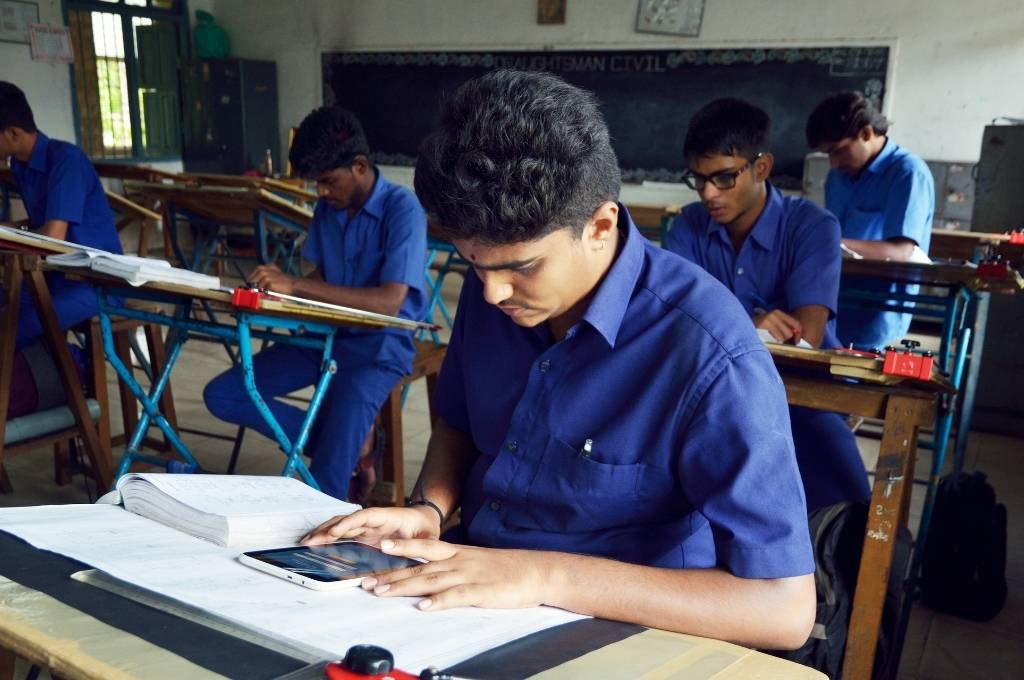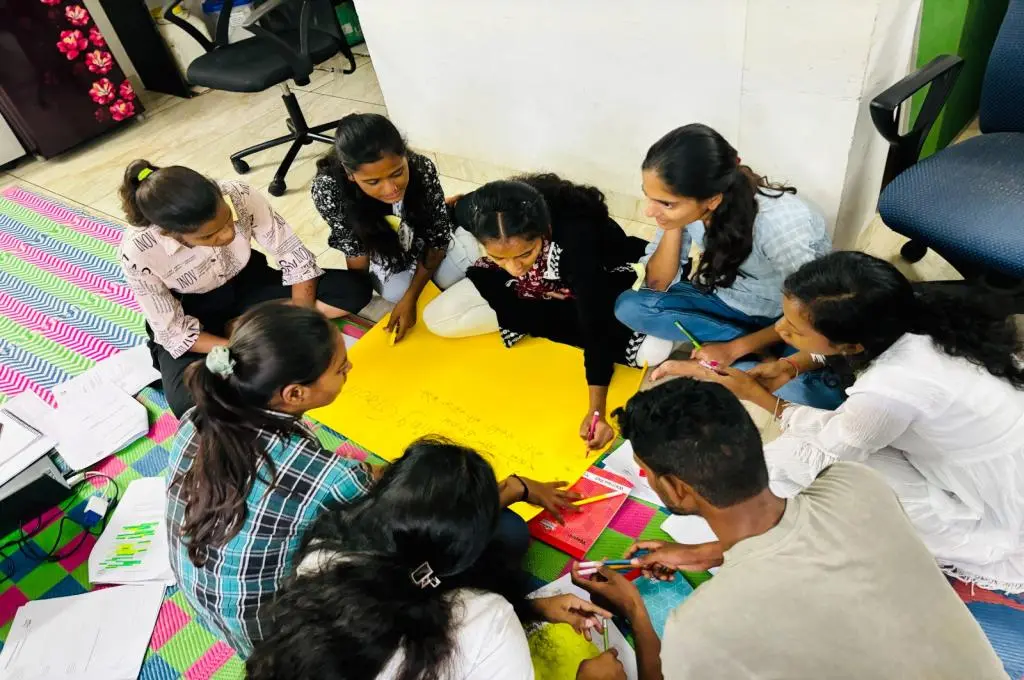India is home to a fifth of the world’s youth, and has the largest young workforce. To absorb such a large workforce, the country will have to generate viable employment opportunities for its young people. More importantly, they will have to consider the aspirations and ambitions of this generation from an economic, social, technological, and ecological point of view.
Incomes bring independence and dignity
For young people today, income, and the resulting economic independence it brings, is significant—it gives them agency and the freedom to make life choices. This is particularly crucial for women because earning an income allows them to negotiate with their families when it comes to marriage and childbearing, and exercise a degree of power and influence in personal and work situations.
Incomes are also considered a source of dignity and mobility. When the young are seen as productive earning members of the family, it automatically earns them the respect and trust of older family members.
Incomes are just a starting point, though. There are several other factors that influence the employment opportunities they seek, the work they prefer, and the career choices they make.
What do young people want?
1. Young people are choosing opportunities closer to home
The youth are increasingly beginning to realise that when they migrate to large cities for jobs, much of their income goes into taking care of their everyday needs; there is little left over as savings, or for investing in their future. So, even if their monthly salaries are INR 8,000–10,000, they have almost a hand-to-mouth existence in urban India.
Meanwhile, in peri-urban spaces, the salaries are not substantially lower than those in urban areas. Retail and service sector jobs in these regions offer almost comparable wages. Young people working in Tier-I and Tier-III cities earn INR 6,000–8,000, stay closer to their villages, and are able to save more given the significantly lower cost of living. We are therefore seeing a large number of youth move to these peri-urban spaces—not urban, and not completely rural—where new work opportunities are on the rise.
We are also beginning to see more jobs come up in these peri-urban areas. While urban is still the hub for existing industries, expansion is taking place in peri-urban areas. Before the COVID-19 pandemic, global food chains like Domino’s, Subway, and Pizza Hut as well as retail brands such as Reliance, Westside, and DMart had started branching out into these locations. Given the opportunities and young people’s desire for a better quality of life, these regions have become increasingly attractive.
What students want to do with their lives is not necessarily linked to the job that is available.
The pandemic has added an additional layer of complexity. Families are reluctant to let their children travel far for work in light of safety concerns. During the pandemic, there has been a significant increase in jobs in the electronics assembly space due to the rise in demand for technology, thereby presenting an excellent opportunity especially for ITI students who have been trained to work in manufacturing. The factories, however, are in industrial hubs and require an extensive amount of travel, which parents are not keen on for their children. So, despite falling household incomes, parents are discouraging their offspring from taking up these jobs, resulting in a paradox of sorts.
2. The first job is just a stepping stone to larger career aspirations
Many organisations that work on skilling and placing young people are focused on finding them jobs. But what students want to do with their lives is not necessarily linked to the job that is available.
For instance, if there are jobs in the service or manufacturing sector, we’ve seen young people take them up as a stepping stone to the careers they really want. They may say, “My goal is to be a nurse, and I will take up this job at a Café Coffee Day outlet for the time being so that I can start earning. At least if I am able to enter the world of work, I will develop some skills in dealing with people, as I continue to work for the larger goal that I have of studying to become a healthcare professional.”
Hence, the first job is a transition job. It’s the first step to earning a salary so that they can support themselves and their aspirations and contribute to the family, while thinking about long-term success for themselves.

3. They want to pay it forward
Dignity and self-esteem for many young people is linked with their ability to contribute to their communities and places of learning. A simple example is a student becoming a baker and then coming back to bake pastries for all the new students in the centre that they graduated from. It makes them feel that they are giving back, and is similar to the pay-it-forward thought process.
They want to become, and be seen as, people who think not just about their career, but also about their community. Therefore, the narrative is of the self, the family, the career, and the community. We as organisations should be able to stitch together all these very separate spaces into how a young person looks at their livelihood journey.
4. Urban youth are becoming less fixated on government jobs
Young people in rural and peri-urban India are willing to keep studying for government job exams till their late twenties in the hope that they will get those jobs. But we are witnessing less of this in cities because the youth are able to see opportunities in the private sector where their peers work.
There is, however, a perceived hierarchy of jobs. Families and the youth themselves prefer to work in sectors where they will interact with machines and computers as opposed to interacting with humans.
It’s almost the new standard for what is considered dignified. If in the community you say that you’re working on a computer, you’ve made a big leap.
Jobs that traditionally require more customer interaction in a physical space are not aspirational, as they need individuals to be more externally oriented, have good communication skills, etc. which a lot of young people don’t have the natural ability for.
5. Technology provides a non-judgemental space for exploration
At Quest Alliance, we have seen the youth gravitate towards using technology to learn, as it allows them pick up skills that they might be hesitant to ask about for fear of being judged by their teachers, parents, and peers. Technology provides them the space to learn and relearn concepts that are hard to understand, or get answers to questions that they would otherwise find difficult to ask. We have seen their relationship with technology change over time. They have progressed from being on shared devices with family members where privacy and surveillance is a major issue to being owners of their own devices where they are creators of knowledge and content, which they are sharing with peers and becoming influencers.
This increase in the use of technology has its downsides too. Many of the new jobs created are in sectors that involve customer interaction and customer service. Anything that entails interacting in the virtual world needs a computer, phone or internet connection. A large proportion of the youth doesn’t have the means to be digitally connected, and therefore doesn’t have access to these jobs. This is particularly harder for women—from both a financial and social perspective. Not only do they lack access to devices, but they also face distrust from family members who believe that women being connected online puts them at greater risk as far as safety and stigma are concerned.
6. Young people are not particularly keen to join the gig economy
With the onset of COVID-19, we’ve seen increased activity in certain industries such as logistics, e-commerce, last-mile delivery and domestic support. However, the willingness to actually take on these jobs has been reducing substantially.
Interestingly, the gig economy is positioned and sold to young people as an opportunity for them to be micro-entrepreneurs—of having their own business, with the flexibility and ability to build an online reputation and earn a fair amount of money if they have good communication and digital skills. It is positioned as an aspirational job.
Choosing a job isn’t a purely financial decision any more.
So, most people start off with high levels of energy and enthusiasm. And as the algorithms take over, they begin to experience a fall in incomes, a loss of control over what they can and cannot do. The choices they are forced to make—taking loans to buy mobility devices, drastically extending working hours and days, not taking time off as it would impact their ratings and wages—have financial and social implications.
Most people don’t know all this when they take up these jobs—they are lured by the high-income numbers that they are shown. But with time, and algorithmic control, the income as well as quality of life deteriorates considerably. In recent times though, young people are seeing and hearing about the downsides, and these roles are no longer their first choice.
We need to understand what our youth want, not what they need
As we grapple with the choices that young people make today, it’s important for us—organisations and funders who work with the youth and livelihoods—to understand the changing landscape. We have funders who ask us why young people aren’t pursuing employment opportunities that offer an increase in income. This is because choosing a job isn’t a purely financial decision any more. They want to know if there is dignity attached to the job, if the working conditions are good, and if they will have a supportive peer network.
Many nonprofits like ours who are working in the field of employability are beginning to step back to reflect on what constitutes success. If it is more than an increase in income, should we be looking at whether the youth are able to work towards achieving their long-term career goals? For young people, growth is not going to come from their first job; it will come from having clarity about their goals and ambitions, and from working through adversity to realise those ambitions.
—
Know more
- Watch this video to learn about Quest Alliance’s work with women on non-traditional careers.
- Read this article to understand why India’s urban youth is giving up their their full-time jobs to take up freelance work.
- Read about a day in the life of a trainer at a nonprofit in Nagaland, who equips young people with the skills they need to succeed in the workplace.






